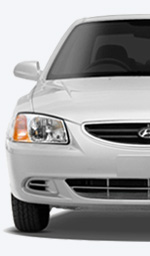 printable version printable version
Care of seat belts
Do not remove or alter the belt system. In addition, care must be taken to safety belts and related parts are not damaged seat hinges, doors or during the abuse.
A warning  When returning the rear seatbacks in the upright position, be careful not to damage the belt or belt buckle. Make sure you have not pinched or not to pinch the tape or lock the rear seat belt. When returning the rear seatbacks in the upright position, be careful not to damage the belt or belt buckle. Make sure you have not pinched or not to pinch the tape or lock the rear seat belt.
Periodic inspection of seat belts
It is recommended to periodically check all safety belts in the absence of cuts, wear and razlohmachivaniya webbing as well as cracks and deformation of metal parts. Replace the belts as soon as possible, defective. Keep belts clean and dry
It should contain seat belts clean and dry. In the case of contamination of seat belts should be cleaned with a neutral detergent dissolved in warm water. Do not try bleach, paint the belts or use strong detergents or abrasives to clean the belts, because it will lead to their damage and weaken the fabric webbing. When to replace seat belts
After any accident all the safety belts and the inertia reel belts and mountings must be replaced. This must be done even if you do not show any visible damage seat belts.
|







